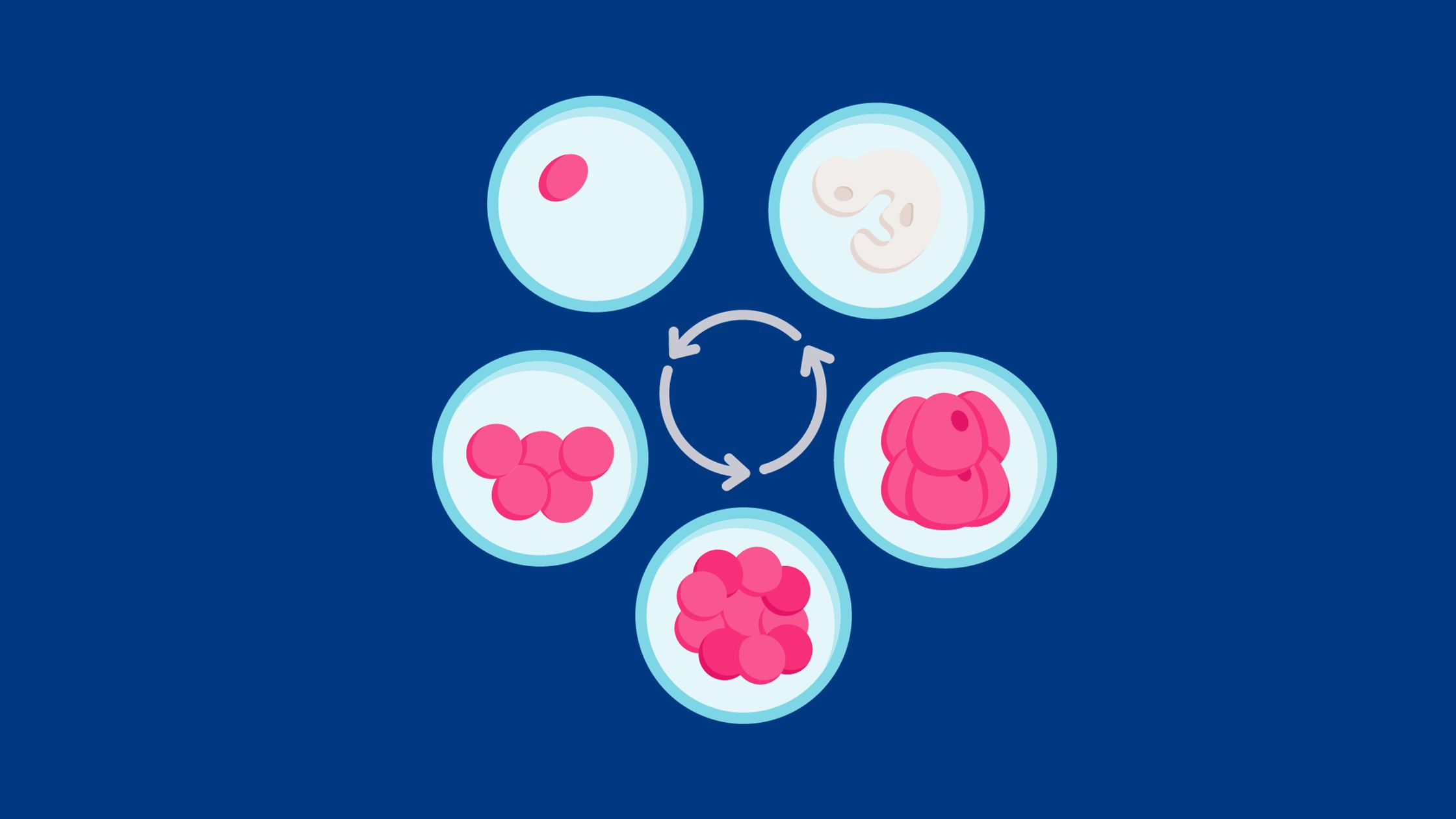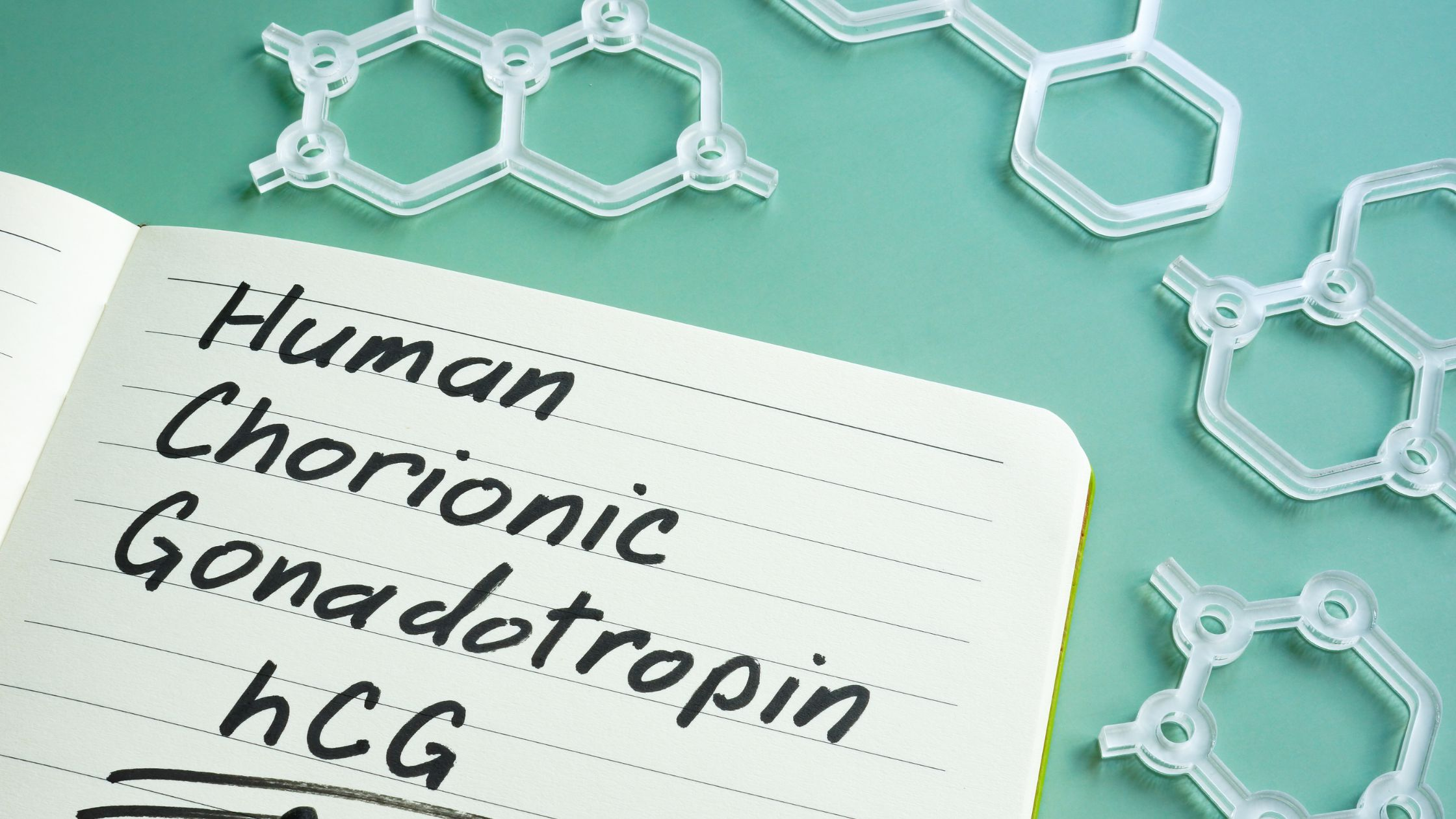For those actively trying to conceive (TTC), this period can be both exhilarating and nerve-wracking. At 16 days past ovulation (DPO), many women find themselves in a whirlwind of emotions, wondering, “Am I pregnant?” or “Is my period just late?”. By the time you hit 16 DPO, it’s natural to be curious or even anxious about the possibility of pregnancy.
While many recognize a missed period as a tell-tale sign of pregnancy, there are other early symptoms of pregnancy to watch out for. Some women might experience fatigue, breast tenderness, or even morning sickness. The body undergoes various changes during this phase, mainly due to the pregnancy hormone called human chorionic gonadotropin (hCG). By 16 DPO, the levels of hCG are typically high enough to confirm a pregnancy.
However, remember that just because you’re experiencing pregnancy symptoms doesn’t guarantee a positive pregnancy test. Sometimes, the body can throw curveballs, making it essential to understand how these symptoms relate to menstruation, ovulation, and pregnancy.
What Happens at 16 DPO?

At 16 DPO, you’re oscillating between the excitement of potential pregnancy and the arrival of your expected period. If you’re pregnant, your body has been producing the pregnancy hormone, hCG, since the embryo settled in your uterine wall around 8 DPO. The range of hCG levels at this stage can vary widely, anywhere from 25 to a whopping 1,000 mIU/ml. And while a level above 25 mIU/ml indicates a positive pregnancy test, every woman’s body is unique.
About two weeks before your period’s due date, your ovaries release an egg in a process called ovulation. This egg has a 24-hour window to get fertilized with sperm. If you got intimate during your ‘fertile window,’ which spans seven days (starting five days before ovulation and ending a day after), the chances of fertilization are high. Why? Well, sperm can survive in a woman’s body for up to five days.
If the egg isn’t fertilized, it exits the body with your next period. However, if the sperm fertilizes the egg, it’s a celebratory moment of conception. This fertilized egg then embarks on a journey down the fallopian tube. It then tries to nestle into your uterus’s wall, called implantation. This crucial step, typically occurring between 6 to 12 DPO, marks the official start of pregnancy. From here, your body produces hCG, the tell-tale hormone that pregnancy tests detect. However, patience is key, as it takes around 7-12 days post-implantation to detect hCG levels.
By 16 DPO, if you’re pregnant, your body might give you subtle (or not-so-subtle) hints. Symptoms like nausea, fatigue, and sore breasts could emerge. The tricky part is that these symptoms can eerily resemble premenstrual syndrome (PMS). It’s like your body’s playing a guessing game with you! However, if you’re in tune with your body, you might pick up on what’s usual and offbeat, helping you discern potential pregnancy from regular PMS.
So, if you’re at 16 days past ovulation and haven’t taken a pregnancy test yet, now’s a good time. Whether you’re feeling early pregnancy symptoms or just your regular self, remember that every woman’s journey is unique. And if you’re indeed nurturing a tiny life inside, it’s also a good time to start on prenatal vitamins to support your little one’s development.
Common Pregnancy Symptoms at 16 DPO
If you’re pregnant, the levels of human chorionic gonadotropin (hCG) have probably risen enough to give you a positive result on a pregnancy test. But some early pregnancy symptoms might also pop up around this time. While you might notice some early signs of pregnancy even before that test turns positive, it’s essential to remember that many of these symptoms can also be PMS playing tricks on you.
Here are more details about the early 16 DPO symptoms:
1. Missed Period
Missing your period is often the first clue for many women that they might be expecting. However, if your periods are as unpredictable as the weather, you might need more than just this sign.
If you notice some spotting at 16 days past ovulation, you might wonder if it’s a sign of pregnancy or just your period. This spotting, sometimes called implantation bleeding, is a wild card. It’s rare around 16 DPO, but it could show up if your ovulation dates are mixed up. And if your period doesn’t usually appear around this time, you might be pregnant.
2. Fatigue
Fatigue is a common pregnancy symptom for many women. Blame it on the surge in progesterone during the early weeks of pregnancy, which can leave you exhausted. But that’s not the only culprit. Your body’s also working overtime, producing more blood to nourish the growing fetus, which can add another layer of exhaustion. To combat fatigue, get plenty of rest, put your feet up when you can, and fuel up with a balanced diet.
3. Tender and Swollen Breasts
When you are expecting, your breasts can become tender and sore and might even swell up, feeling heavier than usual. And if you’re wondering why your nipples are suddenly becoming darker and maybe even a bit itchy or tingly, that’s all part and parcel of the pregnancy package. Remember, these symptoms usually get better after a few weeks as your body gets used to all the hormonal changes.
4. Nausea or Vomiting
One of the most talked-about pregnancy symptoms is nausea, often dubbed “morning sickness.” Despite its name, it can hit you any time – day or night. Typically, this wave of nausea rolls in about a month after conception, but it’s unpredictable, like all things pregnancy. Some women might feel it sooner, while others might sail through without a hint of it.
While the exact cause of nausea remains a bit of a mystery, those ever-changing pregnancy hormones, especially the rise in hCG, are likely the culprits. In fact, a whopping 4 out of 5 women experience it during the early weeks of pregnancy, according to the American Pregnancy Association.
5. Elevated Basal Body Temperature (BBT)
Have you ever noticed a slight uptick in your body temperature after ovulation? That’s your basal body temperature (BBT) doing its thing. Typically, after you ovulate, your BBT rises due to an increase in the production of the progesterone hormone. But this temperature increase is temporary and usually dips back to normal once your next period rolls around.
6. Mood Swings
Are you feeling like an emotional rollercoaster lately? Blame it on the pregnancy hormones. It’s not uncommon for pregnant moms to feel unusually weepy, cranky, or just plain moody while they are expecting.
Can You Take a Pregnancy Test at 16 DPO?
Don’t just rely on symptoms alone to know if you’re pregnant. If you’re eagerly waiting to see if you’re expecting, 16 DPO is the prime time to take a pregnancy test. By this time, the hCG levels in your urine are typically high enough to give you a reliable result.
While false negatives can happen, especially if you’re too early with the pregnancy test, false positives are rare. So, if you see those two lines or that plus sign, it’s time to schedule an appointment with your OB/GYN.
Can Implantation Happen at 16 DPO?
Implantation typically occurs between 6 and 12 DPO. However, during this period, the hCG levels in the urine are usually too low for a pregnancy test to confirm if you’re pregnant. By the 16th day, the hCG levels have generally risen enough for detection.
In some rare instances, implantation can happen as late as 16 DPO. So, if you notice symptoms like spotting, cramping, mood swings, or breast sensitivity around this time, it could be either signs of PMS or an early indication of pregnancy. It’s always a bit of a waiting game, but your body will give you clues along the way!
HCG Levels at 16 DPO

The placenta, which forms during pregnancy, produces a hormone called hCG early on. This hormone can be detected in urine roughly 12 to 15 days after conception. Interestingly, these hCG levels can double every 2 to 3 days, peaking around the 10th week of pregnancy. After that, they decline but remain steady for the rest of the pregnancy.
When measuring hCG, it’s expressed in milli-international units per milliliter of blood, or mIU/ml for short. There are two main hCG tests out there. One is quantitative, which measures the exact amount of hCG in your blood. The other is qualitative, which checks for the presence of hCG in your urine.
Home pregnancy tests, which are qualitative, can detect hCG levels, usually starting from 20 to 50 mIU/ml. On the other hand, blood tests (quantitative) are more sensitive than urine pregnancy tests and can pick up hCG levels as low as 1 to 2 mIU/ml.
If you’re curious about the results, less than 5 mIU/ml on a blood test means a negative pregnancy result. Anything above 25 mIU/ml? That’s a positive. But it could be clearer if you’re in the 6 to 24 mIU/ml range, and you’d need to test again later.
Chances of Getting False Negative at 16 DPO
If you take a pregnancy test 16 DPO, the odds of getting a false-negative are slim. But life’s quirky, and sometimes things don’t go as planned. One of the main culprits for a false negative could be jumping the gun and taking the test too soon. If your body hasn’t produced enough of the hCG hormone, the pregnancy test might not pick it up.
Another common hiccup? Mixing up the dates. You might have a false-negative if your ovulation cycle dates are mixed up or misjudged when your next period is due. And who knew guzzling down loads of water or any other drink before the test might water down the hCG levels in your urine? Too much liquid can dilute your urine, giving a negative result even if you’re pregnant.
16 DPO BFN: Can You Still Be Pregnant?
You’re at 16 DPO and have all these early pregnancy symptoms like feeling moody, super tired, nauseous, and even your breasts feeling a bit tender. But then, bam! The pregnancy test comes back negative.
Before you jump to conclusions, there are a few things to consider. First off, you just tested too early. It happens. Or perhaps you messed up your ovulation dates or your period cycle. Even traveling, dealing with health issues, or shedding pounds can throw off your ovulation. And let’s remember the sneaky culprit: diluted urine. If you’ve been drinking a ton of water, it might mess with the test results.
If you feel all the pregnancy vibes, give it a few more days and test again. Or, for a more surefire answer, head over to your doctor and get a blood test. They’re usually more on the nose than the pee-on-a-stick kind.
16 DPO No Symptoms: What Should I Do Now?
So, you’re 16 days past ovulation and not feeling any typical early pregnancy signs? Don’t hit the panic button just yet. You may have had a late ovulation, or the little embryo took its sweet time implanting. And guess what? Late ovulation can mean you won’t feel those pregnancy vibes right away.
But here’s the thing: every woman is unique. Some might not feel a single symptom and still get that exciting Big Fat Positive (BFP) on their test. There’s no one-size-fits-all when it comes to pregnancy symptoms.
16 DPO No Period: What Does That Mean?

You might be expecting a baby if you’re at 16 DPO and haven’t got your period yet. Typically, ovulation happens between the 13th and 20th day of your cycle, with day one being the first day of your period. So, for many ladies, the calendar usually marks the 16th DPO as the day they’d expect their monthly visitor. No show? Well, that might be a sign you’re pregnant!
If you’re experiencing early pregnancy symptoms like fatigue, mood swings, noticing your breasts are a bit sore, or seeing a spike in your basal body temperature (BBT), these could be the universe’s way of dropping some early pregnancy hints. But before you jump on the baby bandwagon, it’s a good idea to grab a pregnancy test for confirmation of a Big Fat Positive.
What if You Experience Cramps but No Period?
Around the fourth week of pregnancy, some women might feel what’s known as implantation cramps. These aren’t your regular menstrual cramps; they’re more like a little poke or prick. And, unlike the monthly cramps, these don’t follow the same calendar. The duration? Some women might feel a twinge or two, while others could be in for a few days of discomfort.
Is Cramping on Your Left Side Normal at 16 DPO?
Early in pregnancy, some women might feel a bit of a cramp on their left side. It’s like your body’s saying, “We’re making space for the little one!” But don’t jump the gun; sometimes, your tummy throws a fit.
If you’re feeling this cramp, you might also sense some pressure in your pelvic zone, a nagging pain in your back, or even a pinch in the lower left part of your belly.
If things worsen with severe pain, spotting, or anything that looks like blood where it shouldn’t be, it’s time to contact your doctor.
Takeaway
- By 16 DPO, many women feel symptoms like fatigue, sore breasts, and mood swings.
- High hCG levels are typical at this stage.
- 16 DPO is a good time for a home pregnancy test.
- No symptoms by 16 DPO? Don’t worry; you can still test.
- A missed period might indicate pregnancy.
- Left-side cramping is common; it could be body adjusting or digestive issues.
- Got a BFN result? Stay hopeful.
- Consider retesting in a few days or getting a blood test from a doctor.
References
Symptoms of Pregnancy: What Happens First. Mayo Clinic, Mayo Foundation for Medical Education and Research, 11 May 2019, www.mayoclinic.org/healthy-lifestyle/getting-pregnant/in-depth/symptoms-of-pregnancy/art-20043853.
Doing a pregnancy test; NHS; https://www.nhs.uk/pregnancy/trying-for-a-baby/doing-a-pregnancy-test/
Center for Devices and Radiological Health. Pregnancy. U.S. Food and Drug Administration, FDA, www.fda.gov/medical-devices/home-use-tests/pregnancy.
HCG Blood Test – Quantitative: MedlinePlus Medical Encyclopedia. MedlinePlus, U.S. National Library of Medicine, medlineplus.gov/ency/article/003510.htm.
Betz, Danielle. Human Chorionic Gonadotropin (HCG). StatPearls [Internet]., U.S. National Library of Medicine, 27 Apr. 2020, www.ncbi.nlm.nih.gov/books/NBK532950/.
Jacobson, John D., and David Zieve. HCG Blood Test – Quantitative: MedlinePlus Medical Encyclopedia. MedlinePlus, U.S. National Library of Medicine, 25 Sept. 2018, medlineplus.gov/ency/article/003510.htm.

